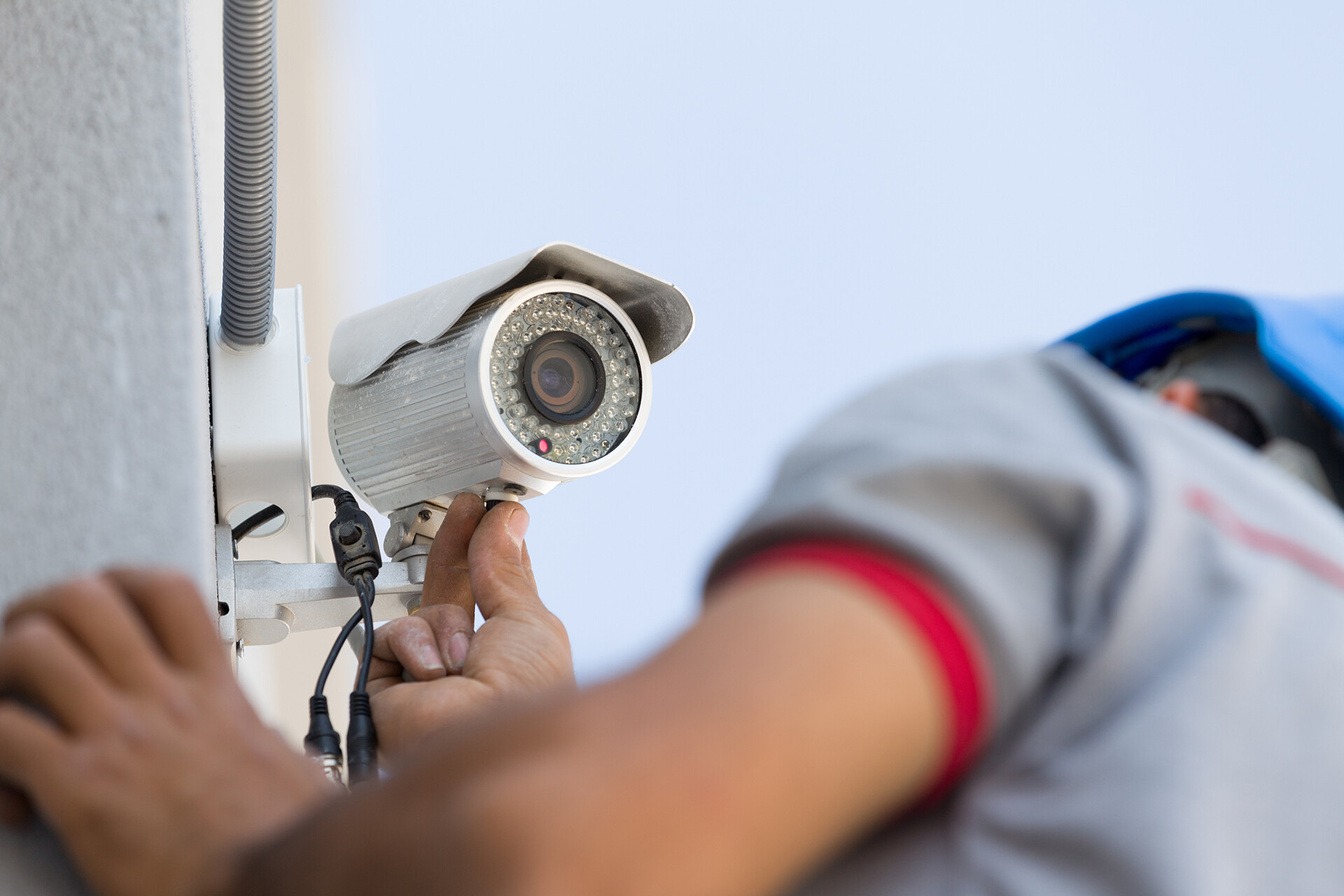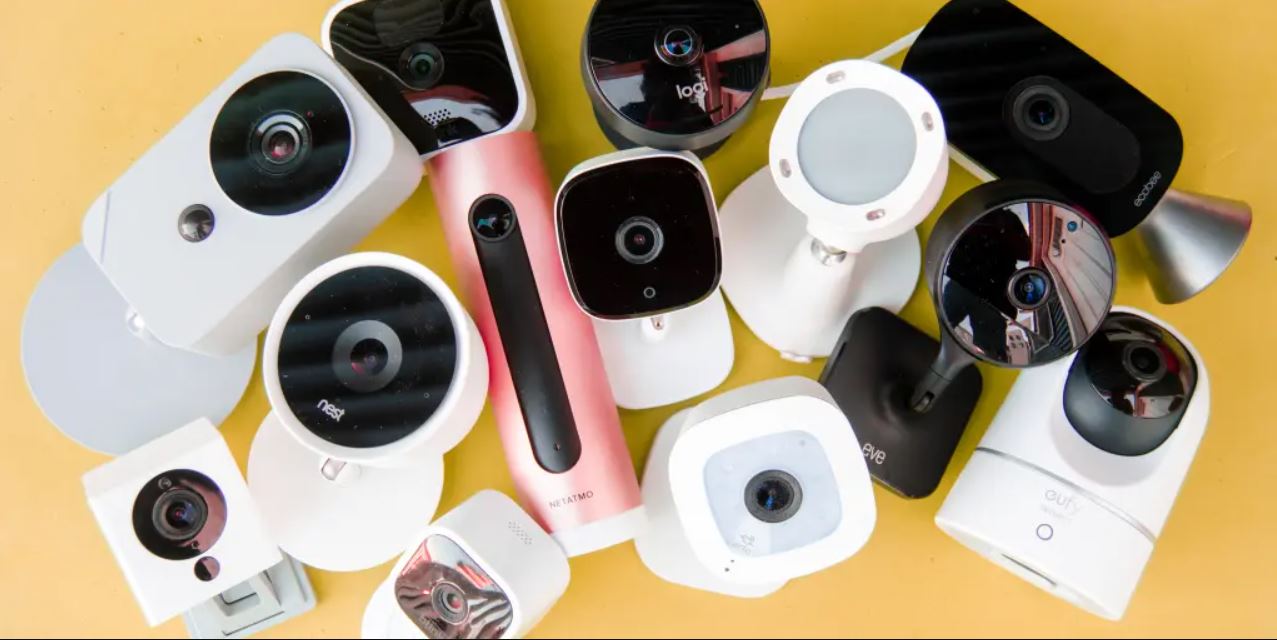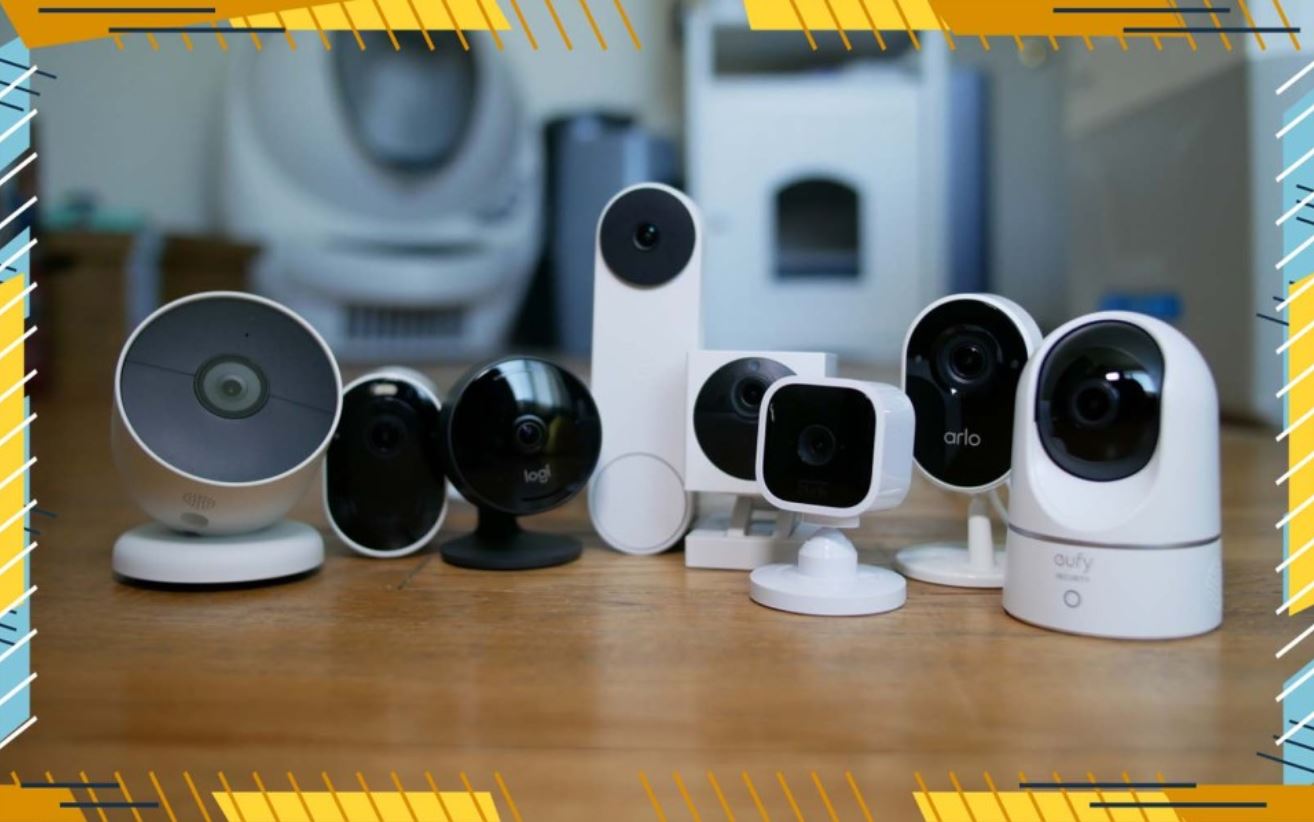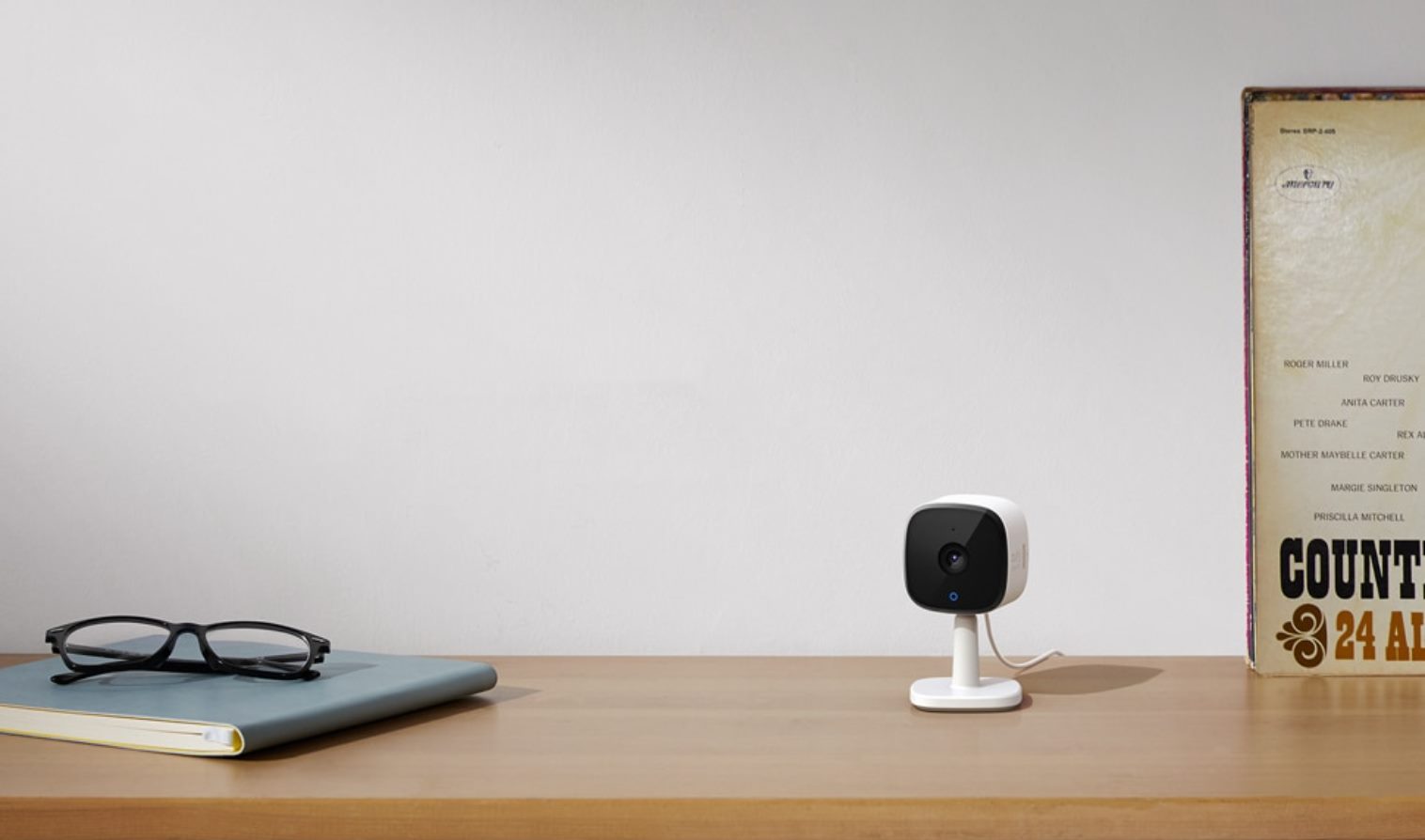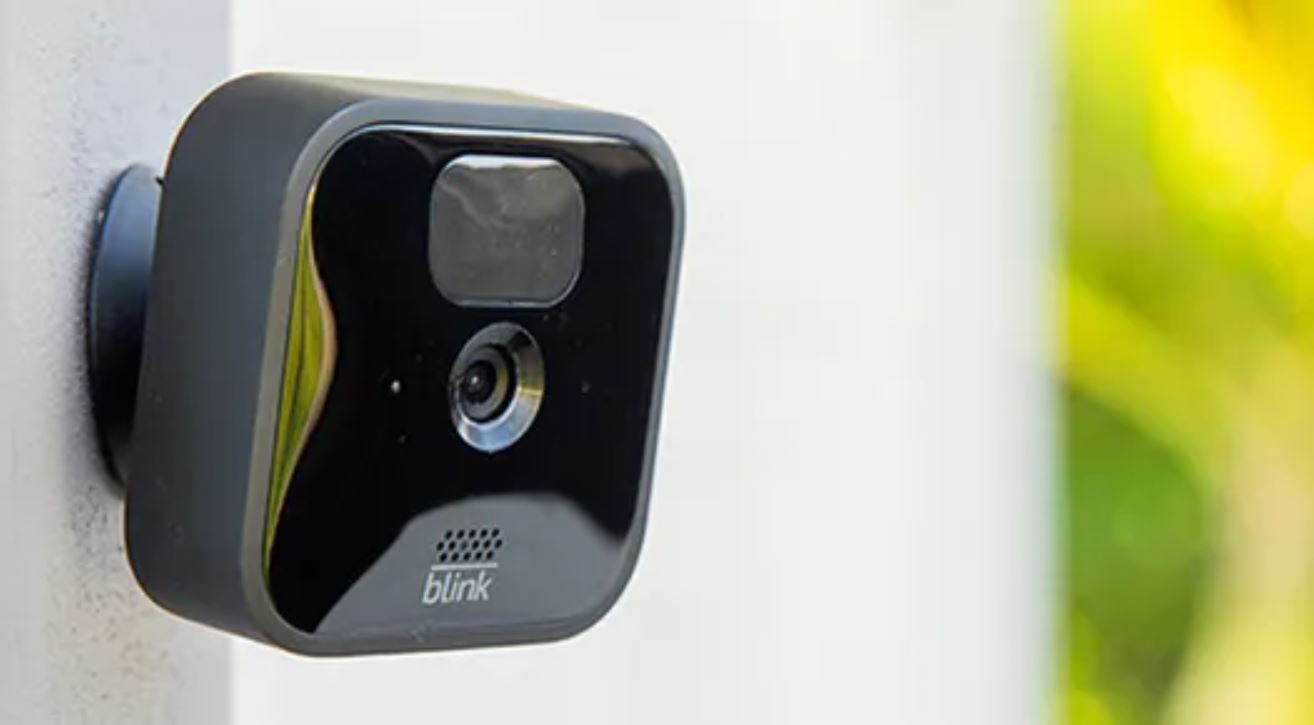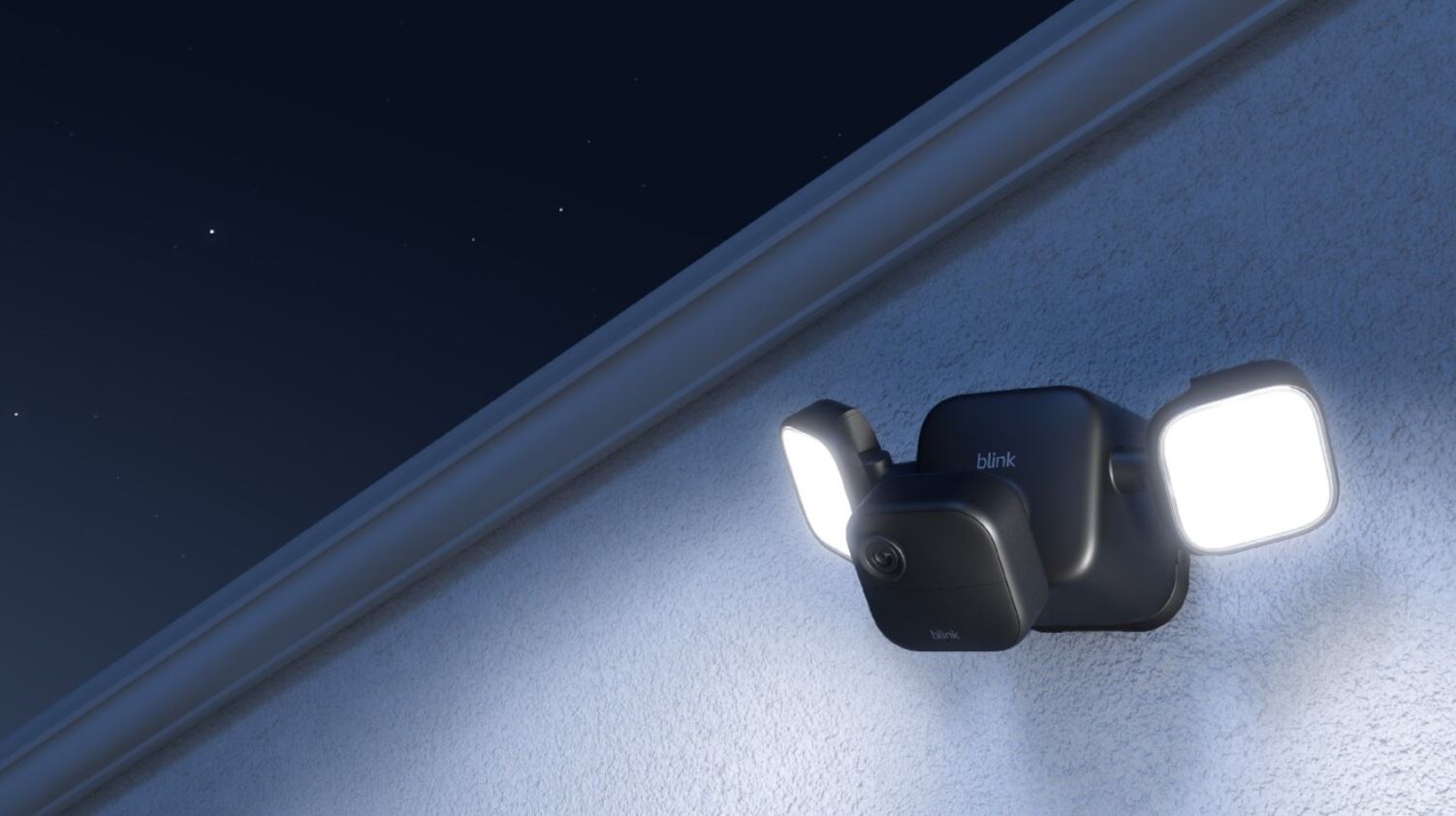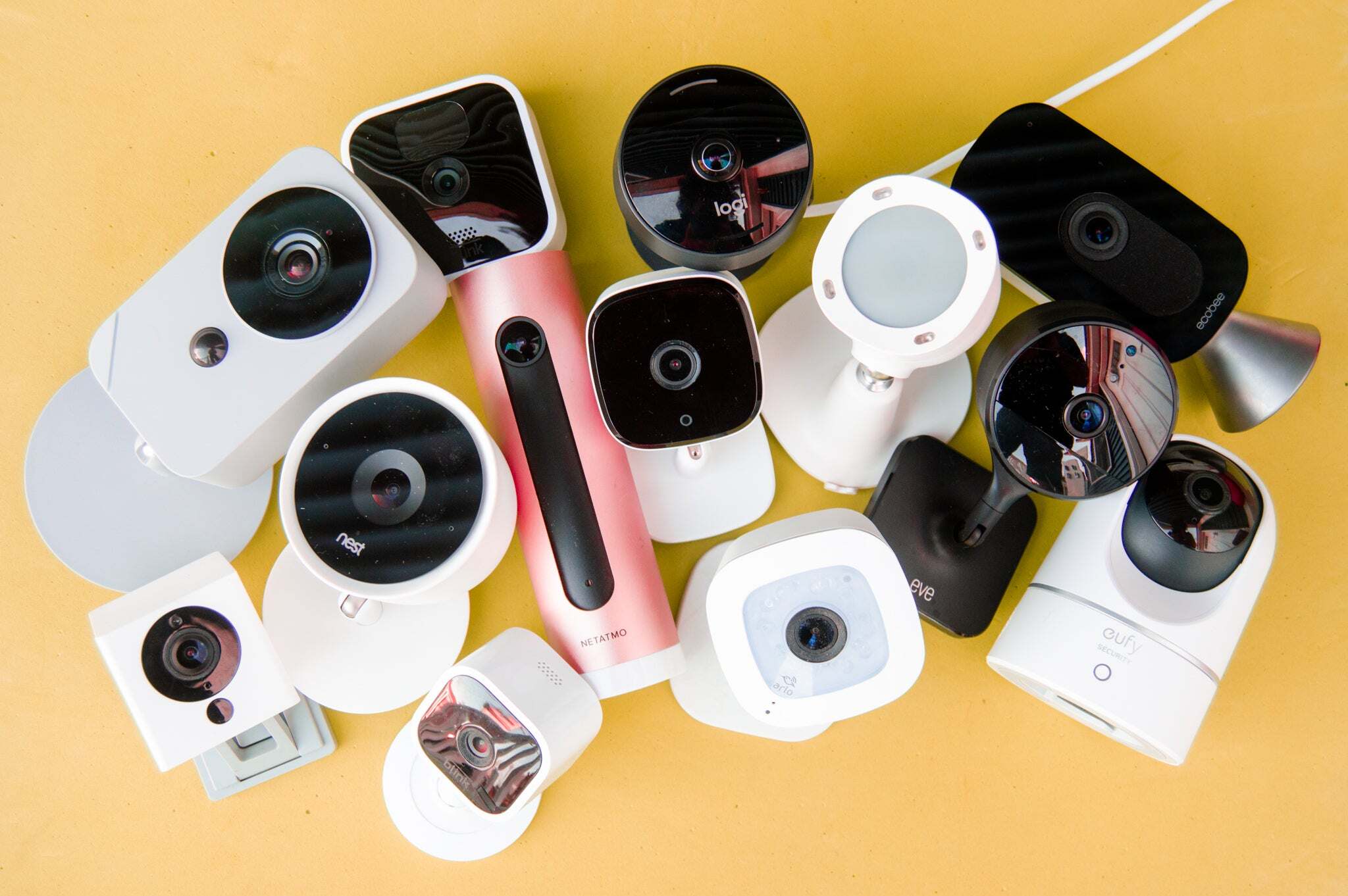Introduction
Welcome to the world of home security camera systems! Whether you are a homeowner or a renter, ensuring the safety and security of your home is a top priority. With the advancement of technology, home security camera systems have become more accessible and affordable than ever before. These systems allow you to keep an eye on your property, loved ones, and belongings, even when you are not physically present.
Choosing the right home security camera system can be a daunting task, given the plethora of options available in the market. From wired to wireless, indoor to outdoor, and basic to advanced features, there are numerous considerations to make. In this article, we will explore the key factors to look for in a home security camera system to help you make an informed decision.
Before diving into the details, it is important to note that the perfect home security camera system will vary depending on your specific needs and preferences. However, there are some universal factors that can guide you in choosing the best system for your home.
In the next sections, we will delve into the various features and aspects that you should consider when selecting a home security camera system. From ease of installation to video quality and resolution, from motion detection and alerts to storage options, we will cover all the essential elements. So, let’s explore the key factors that will ensure you have a reliable and effective security camera system to monitor your home.
Ease of Installation
One of the first things to consider when choosing a home security camera system is the ease of installation. Most homeowners are not professional technicians, so opting for a system that is easy to set up can save you time, effort, and frustration.
Wireless camera systems are generally easier to install compared to wired systems. With wireless cameras, you don’t have to deal with the hassle of running cables through the walls or drilling holes. Instead, you can place the cameras where you need them and connect them to your Wi-Fi network. This makes wireless camera systems a great choice for renters or those who don’t want to make permanent modifications to their property.
Many modern home security camera systems come with user-friendly installation guides and intuitive mobile apps that simplify the setup process even further. These apps often have step-by-step instructions, allowing you to easily connect your cameras to the app and start monitoring your home in no time. Some systems even offer plug-and-play options, where you simply need to plug in the cameras and they will automatically connect to the system.
It’s also worth considering if the system offers wireless connectivity to additional devices like monitors or a DVR/NVR. This can provide added flexibility and convenience in terms of where you can view the footage or how you can access the system’s settings.
If you prefer a wired system or have specific requirements that necessitate it, be prepared for a more involved installation process. However, some wired camera systems now come with simplified installation methods, such as Power over Ethernet (PoE) technology. With PoE, one cable can provide both power and internet connectivity to the camera, minimizing the number of cables needed and simplifying the setup.
Overall, choosing a home security camera system with an easy installation process will save you time and frustration. Whether you opt for a wireless system or a wired one with simplified installation methods, ensure that the system provides clear and concise instructions to help you get started effortlessly.
Video Quality and Resolution
When it comes to a home security camera system, the quality of the video footage is crucial. After all, the main purpose of installing security cameras is to capture clear and detailed images or videos of any events or incidents.
Look for a system that offers high-definition (HD) video quality and resolution. High-resolution cameras, typically measured in pixels, can provide clearer and more detailed images. The standard resolution for home security cameras is 1080p (1920×1080 pixels), which offers crisp and sharp footage. However, some advanced systems even offer 4K resolution (3840×2160 pixels) for ultra-high definition videos.
In addition to resolution, consider the camera’s image sensor and lens quality. The image sensor determines the camera’s ability to capture light and produce clear images, especially in low-light conditions. Look for cameras with larger image sensors, such as 1/2.5″ or 1/2.8″, as they tend to perform better in low-light situations.
The lens quality is also crucial for capturing clear and sharp footage. Look for cameras with lenses that have a wide aperture (lower f-number) to allow more light to enter, resulting in brighter and clearer images. Additionally, consider the camera’s field of view (FOV) or viewing angle. A wider FOV can capture more area and provide better coverage.
Another important aspect to consider for video quality is the camera’s ability to handle different lighting conditions. Look for cameras with advanced features such as Wide Dynamic Range (WDR) or High Dynamic Range (HDR). These features help balance the exposure in scenes with contrasting lighting conditions, resulting in more evenly lit and detailed footage.
Lastly, check if the camera system offers the ability to adjust video settings, such as brightness, contrast, and saturation. This can be helpful in fine-tuning the video quality according to your specific needs and preferences.
By choosing a home security camera system with high-resolution cameras, advanced image sensors and lenses, and adjustable video settings, you can ensure that you capture clear and detailed footage for effective surveillance of your home.
Field of View
The field of view (FOV) of a home security camera system refers to the area or angle that the camera can capture. It is an essential factor to consider when choosing a camera as it determines the coverage and surveillance capabilities of the system.
A wider field of view means that the camera can cover more area, allowing you to monitor a larger space with fewer cameras. This is particularly useful for large properties or areas where you want to maximize coverage while minimizing the number of cameras needed.
The field of view is usually measured in degrees, with a typical range for home security cameras falling between 90 to 180 degrees. A wider field of view, such as 180 degrees, allows for a panoramic view and is especially useful for outdoor surveillance to cover a wide perimeter. On the other hand, a narrower field of view, such as 90 degrees, provides a more focused view and is suitable for monitoring specific areas or points of interest.
It is important to consider the placement and location of the cameras when evaluating the field of view. Ensure that the camera’s field of view aligns with the areas you want to monitor, such as entryways, driveways, or backyard. Take into account any obstructions, such as walls or furniture, that may affect the camera’s ability to capture the desired areas. Additionally, consider the mounting options and adjustability of the camera to fine-tune the field of view as needed.
Some home security camera systems offer PTZ (pan-tilt-zoom) functionality, allowing you to remotely control the camera’s movement and adjust the field of view. This can be beneficial for actively monitoring different areas or tracking moving objects. However, it is important to note that cameras with PTZ functionality are typically more expensive than fixed cameras.
In summary, when choosing a home security camera system, consider the field of view that aligns with your surveillance needs. A wider field of view can provide broader coverage, while a narrower field of view may be more suitable for focusing on specific areas. Assess the placement and adjustability of the cameras, and consider cameras with PTZ functionality for added flexibility.
Night Vision
Effective surveillance of your home doesn’t stop when the sun goes down. That’s why night vision capability is a crucial aspect to consider when selecting a home security camera system. Night vision allows the cameras to capture clear and detailed footage even in low-light or complete darkness.
When evaluating the night vision feature, pay attention to the camera’s infrared (IR) technology and the range it offers. Infrared LEDs are responsible for illuminating the area in front of the camera, enabling it to “see” in the dark. The number and quality of IR LEDs can determine the distance and clarity of night vision footage.
Check the camera’s stated range for night vision, which is usually measured in feet or meters. Consider the specific areas you want to monitor at night and ensure that the camera’s night vision range covers those areas adequately. Keep in mind that environmental factors such as obstructions, reflective surfaces, and weather conditions can affect the effective range of night vision.
It’s also worth noting that some cameras offer color night vision, which provides more vivid and detailed footage compared to traditional black and white night vision. This can be especially useful in identifying individuals or objects in the captured footage.
When it comes to night vision performance, it is important to understand that the image quality may be less detailed compared to daytime footage. However, a high-quality home security camera system will still provide clear and recognizable images during nighttime surveillance. Look for cameras with advanced features like wide dynamic range (WDR) or digital noise reduction (DNR) that can enhance the clarity and reduce noise in low-light conditions.
Keep in mind that the effectiveness of night vision can vary between different camera models and brands. Reading reviews and checking sample footage can give you a better understanding of the actual night vision performance of a specific camera.
By selecting a home security camera system with reliable and effective night vision capability, you can ensure that your property is well-protected around the clock, even in low-light or no-light conditions.
Motion Detection and Alerts
Motion detection is a key feature to consider when choosing a home security camera system. It allows the cameras to detect any movement within their field of view and trigger relevant actions, such as recording footage, sending alerts, or activating other security measures.
Look for cameras with advanced motion detection technology that can accurately identify and differentiate between human movement and other objects, such as animals or swaying branches. This can help reduce false alarms and ensure that you are only notified when there is actual activity of concern.
Some cameras offer customizable motion detection zones, allowing you to specify the areas within the camera’s view that you want to monitor for motion. This can be particularly useful if you want to focus on specific areas, such as doors, windows, or driveways, and ignore motion from less important areas, such as trees or passing vehicles.
When motion is detected, the camera system should provide timely and reliable alerts to notify you of the activity. These alerts can be in the form of push notifications to your smartphone, email notifications, or even audible alarms. Ensure that the system offers various alert options that suit your preferences and enable you to promptly respond to any potential threats.
In addition to simple motion detection alerts, some advanced camera systems offer smart features like person detection or facial recognition. These features can further enhance the accuracy and specificity of the alerts, allowing you to be notified specifically when a person is detected rather than any general motion.
Consider the flexibility and customization options for motion detection settings. Look for systems that allow you to adjust sensitivity levels, define specific rules or actions triggered by motion, and schedule when motion detection is active. This allows you to tailor the camera system’s behavior based on your specific security needs and preferences.
By selecting a home security camera system with reliable motion detection capabilities, customizable alerts, and advanced features like person detection, you can ensure that you are promptly notified of any activity and can take appropriate action to protect your home.
Two-Way Audio
Two-way audio is a valuable feature to consider when looking for a home security camera system. It allows you to not only see what’s happening in and around your home but also communicate with those within proximity of the cameras. This feature can greatly enhance the effectiveness and versatility of your surveillance system.
Two-way audio allows you to listen to and speak with individuals near the camera through a built-in microphone and speaker system. This can be useful for a variety of scenarios. For example, you can use the feature to communicate with delivery personnel, instruct visitors, or even deter potential intruders.
When evaluating the two-way audio feature, consider the quality of the microphones and speakers. High-quality audio components will ensure clear and understandable sound transmission. Additionally, look for cameras that have noise-canceling technology to filter out background noise and provide a more focused and intelligible audio experience.
Some advanced camera systems also offer additional features to enhance the usability of the two-way audio function. For example, cameras with duplex audio allow for simultaneous transmission and reception of audio, making conversations smoother and more natural. Others may provide adjustable audio volume levels or the ability to mute the audio when necessary.
It’s important to note that the effective range of two-way audio can vary depending on factors such as the camera model and surrounding environmental conditions. Consider the camera’s stated range for audio transmission and ensure it covers the desired area where communication may be required.
Whether you want to greet visitors, communicate with family members, or warn potential intruders, a home security camera system with two-way audio capabilities can add an extra layer of security and convenience to your surveillance setup.
Storage Options
Storage options are an important consideration when selecting a home security camera system. These options determine how your camera system handles and stores the recorded footage, ensuring that you have access to the necessary evidence in the event of an incident or suspicious activity.
There are generally two main types of storage options: local storage and cloud storage.
Local storage typically involves using a memory card or a dedicated Network Video Recorder (NVR) or Digital Video Recorder (DVR) to save the recorded footage. Memory cards are commonly used in cameras with onboard storage slots, providing a convenient and accessible option. However, the storage capacity of memory cards is limited, so be sure to choose one with sufficient capacity or the ability to support high-capacity cards.
NVRs and DVRs, on the other hand, offer more extensive storage capabilities. These devices can be connected to multiple cameras and provide centralized storage for all footage. They often come with various storage configuration options, such as scalable hard disk drives (HDDs) or solid-state drives (SSDs), allowing for increased storage capacity and longer retention periods.
Cloud storage is another option that has gained popularity in recent years. With cloud storage, the recorded footage is securely stored on remote servers, accessible through an internet connection. This eliminates the need for physical storage devices and offers the advantage of remote access to your footage from anywhere at any time. However, be aware that cloud storage may require a subscription or additional fees for extended storage durations or accessing advanced features.
When considering storage options, take into account factors such as the retention period of footage, accessibility of archived footage, and the security measures in place to protect your data. Consider how long you want to retain the recorded footage and whether you prefer to have easy access to the recordings on-site or through remote cloud storage.
Many camera systems offer a combination of local storage and cloud storage options, allowing for flexibility and redundancy. This means you can have both a physical backup of your footage and the convenience of remote access if needed.
Overall, selecting the right storage option for your home security camera system depends on your specific requirements, including storage capacity, accessibility, and budget. Be sure to consider the pros and cons of each option to meet your storage needs effectively.
Remote Access and Mobile App
Remote access and mobile app functionality are essential features to consider when choosing a home security camera system. These features allow you to monitor your property and access the camera feeds from anywhere using your smartphone, tablet, or computer.
A reliable and user-friendly mobile app is crucial for seamless remote access and control of your camera system. Look for systems that offer dedicated mobile apps compatible with your device’s operating system, such as iOS or Android. The app should provide a user-friendly interface that allows you to easily view live feeds, review recorded footage, adjust settings, and receive alerts.
Ensure that the app offers real-time streaming capability, allowing you to view the camera feeds live as events unfold. This is particularly important when you want to check on the status of your home or respond to alerts promptly.
Mobile apps should also provide additional features that enhance the functionality and convenience of your camera system. These features may include the ability to take snapshots, record videos, pan and tilt motorized cameras, zoom in on specific areas, and enable two-way audio communication.
When evaluating the mobile app, consider other important aspects such as the ease of navigation, responsiveness, and stability. Reading user reviews and ratings can provide insights into the overall user experience and reliability of the app.
Remote access through a mobile app also allows you to customize and manage the camera system’s settings remotely. Whether it’s adjusting motion detection sensitivity, scheduling recording times, or upgrading firmware, the ability to control and configure the system from anywhere adds flexibility and convenience.
In addition to mobile apps, consider if the camera system offers web browser access, allowing you to access and manage your cameras from a computer. This can be useful when you prefer a larger screen or need to access the camera system from a non-mobile device.
By selecting a home security camera system with a reliable and user-friendly mobile app, you can have peace of mind knowing that you can monitor and manage your camera system remotely, keeping your home under surveillance wherever you are.
Compatibility with Smart Home Systems
Integration with smart home systems is an important consideration when choosing a home security camera system. A compatible system can provide seamless integration and allow you to take advantage of the broader capabilities and convenience offered by your smart home ecosystem.
Many modern home security cameras are designed to work with popular smart home platforms like Amazon Alexa, Google Assistant, or Apple HomeKit. This compatibility allows you to control and manage your cameras using voice commands or through a central smart home hub.
With smart home integration, you can incorporate your security cameras into automated routines or scenes. For example, you can configure your cameras to arm or disarm along with other smart home devices when you leave or return to your home. This ensures that your security system is always in sync with your daily activities.
Integrating your security cameras with smart home devices also opens up possibilities for enhanced automation. You can program your cameras to record or send notifications when specific events occur, such as when a door sensor is triggered or a motion sensor detects movement. This level of integration provides a more comprehensive security solution and allows for more proactive monitoring and response.
Furthermore, compatibility with smart home systems can offer convenient control and access to your camera feeds through a centralized smart home app. This means you can monitor and manage your security cameras along with your other smart devices from a single app interface.
When considering compatibility with smart home systems, make sure to check the specifics of integration. Some camera systems may offer native integration with certain platforms, while others may require the use of a separate bridge or hub for integration.
Before making a purchasing decision, it’s important to confirm that the home security camera system you choose is compatible with your existing smart home devices or the platform you plan to use. This will ensure a seamless integration of your security cameras and allow you to maximize the potential of your smart home ecosystem.
Weatherproof and Outdoor Use
If you’re planning to install security cameras outdoors, it is crucial to choose a system that is specifically designed for outdoor use and can withstand various weather conditions. The weatherproofing of the cameras ensures their durability and reliability in outdoor environments.
Look for cameras that have an IP (Ingress Protection) rating, which indicates their resistance to dust and moisture. The first digit of the IP rating represents the level of protection against solid particles, while the second digit represents the level of protection against liquids. For outdoor use, it is recommended to choose cameras with a minimum IP65 rating. This ensures that they are dust-tight and can withstand water jets from any direction.
In addition to the IP rating, consider other durability features such as vandal resistance and impact resistance. Cameras with a strong and sturdy construction can withstand attempts at tampering or vandalism, ensuring the longevity and reliability of your security system.
Outdoor cameras should also have proper housing and sealing to protect them from harsh weather conditions such as rain, snow, wind, and extreme temperatures. Some cameras come with built-in heaters or fans to regulate temperature and prevent condensation, allowing them to operate in both hot and cold climates.
If you live in an area prone to extreme weather conditions, look for cameras that are specifically designed to withstand such challenges. These may include cameras with reinforced housings, added weatherproofing features, or even specifically designed camera models for extreme weather environments.
When installing outdoor cameras, proper placement and positioning are crucial to ensure optimal coverage and protection. Consider the camera’s field of view and aim to cover important areas such as entry points, driveways, or backyard. Ensure that the camera’s mounting brackets and hardware are also weather-resistant to withstand outdoor conditions.
Remember to follow manufacturer guidelines and recommendations for installation and maintenance to ensure the longevity and proper functioning of your outdoor security cameras.
By choosing weatherproof cameras specifically designed for outdoor use, you can have peace of mind knowing that your surveillance system will continue to operate effectively and reliably regardless of the weather conditions.
Power Source Options
When selecting a home security camera system, considering the power source options available is essential. Different camera models may have different power requirements, so it’s important to choose the option that best suits your specific needs and the installation environment.
There are generally two main power source options for security cameras: wired and wireless.
Wired cameras typically require a direct power connection using a power adapter or electrical wiring. This provides a reliable and constant power source, ensuring uninterrupted operation. Wired cameras are often a popular choice for long-term installations or areas where power outlets are easily accessible.
On the other hand, wireless cameras are powered by built-in batteries or rechargeable batteries. These cameras offer more flexibility in terms of camera placement and installation since they are not limited by the proximity to power outlets. Wireless cameras are often preferred for temporary installations or locations where power outlets are not readily available.
When considering wireless cameras, it’s important to consider the battery life and the ease of recharging or replacing the batteries. Some cameras have longer battery life and may come with convenient options for recharging, such as removable batteries or solar panels for continuous power supply.
Another power source option to consider is Power over Ethernet (PoE) for wired cameras. With PoE, the camera receives both power and data through a single Ethernet cable, eliminating the need for separate power connections. PoE cameras can be more convenient to install since they require only one cable, and they are commonly used for larger surveillance systems.
Before purchasing a home security camera system, consider the practicality of the power source options available, based on factors such as the camera’s location, ease of installation, and the availability of power outlets. Also, ensure that the power source provides sufficient reliability and longevity to meet your surveillance needs.
By carefully considering the power source options, you can choose the most suitable option for your home security camera system and ensure continuous and reliable operation.
Cost and Value
When it comes to choosing a home security camera system, cost and value are important factors to consider. While you want to stay within your budget, it’s crucial to ensure that you are getting a system that provides the necessary features, reliability, and overall value to meet your security needs.
Camera systems can vary significantly in price, depending on factors such as the number of cameras included, the quality of cameras, additional features, storage options, and brand reputation. It’s important to strike a balance between affordability and quality, ensuring that you are investing in a system that will effectively protect your home.
Consider the number of cameras needed to adequately cover your property. Assess the areas you want to monitor and determine if a single camera or multiple cameras would provide the necessary coverage. Keep in mind that adding more cameras may increase the upfront cost but can provide better surveillance and peace of mind.
Compare the features offered by different camera systems and weigh their value based on your specific security requirements. Some features, such as high-resolution video quality, advanced motion detection, or remote access, may be more important to you than others. Prioritize the features that are essential to your needs and determine whether the price aligns with the value you expect from the system.
Consider the long-term costs associated with the camera system as well. This includes any ongoing fees for cloud storage, maintenance, or system upgrades. Carefully evaluate these costs to ensure they fit within your budget and align with the value you expect from the system.
While it can be tempting to go for the lowest-priced option, be cautious of compromising on quality or essential features. Investing in a reliable and high-quality camera system will provide long-term value and peace of mind, ensuring that your home is well-protected.
Research different brands and read customer reviews to assess the reputation and reliability of the camera system you’re considering. It’s worthwhile to invest in a trusted brand that has a track record of delivering quality products and providing good customer support.
Ultimately, the cost and value of a home security camera system should align with your specific needs, budget, and expectations. By carefully evaluating the features, reputation, and long-term costs, you can make an informed decision and invest in a system that provides reliable security and peace of mind for your home.
Conclusion
Choosing the right home security camera system is essential for ensuring the safety and security of your home. By considering the key factors discussed in this article, you can make an informed decision and invest in a system that meets your specific needs and requirements.
Begin by evaluating the ease of installation, as a user-friendly setup process will save you time and effort. Consider the video quality and resolution to ensure clear and detailed footage, especially when it comes to identifying any potential threats or events. Evaluate the field of view to determine the coverage and monitoring capabilities of the cameras.
Don’t overlook the importance of night vision, as it enables your cameras to capture clear images in low-light or no-light conditions. Motion detection and alerts are crucial for immediate notification of any suspicious activities, providing you with peace of mind and the ability to respond promptly.
Two-way audio can enhance your security system by allowing you to communicate with individuals within proximity of the cameras. Storage options are important to consider for long-term retention and easy access to the recorded footage.
Ensure compatibility with your smart home system, enabling seamless integration and additional automation capabilities. Outdoor use requires weatherproof cameras that are designed to withstand various weather conditions. Lastly, consider the power source options that best suit your installation environment and provide reliable and uninterrupted operation.
While cost is a factor, assess the overall value and quality of the system to ensure it meets your security needs effectively. Consider long-term costs such as storage fees and maintenance expenses. Research reputable brands and read customer reviews to make an informed decision.
By considering all these factors, you can select a home security camera system that provides reliable surveillance, peace of mind, and the utmost protection for your home and loved ones.







